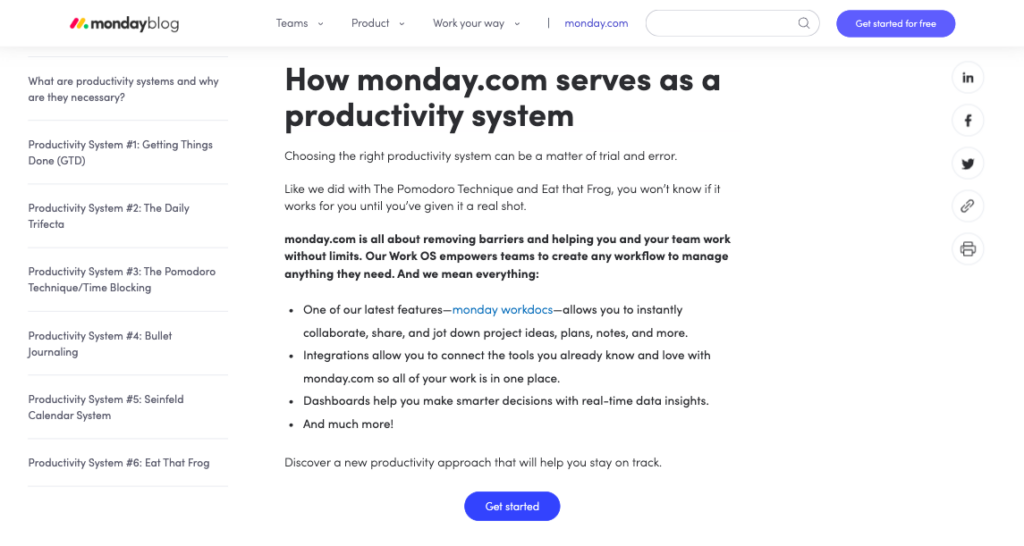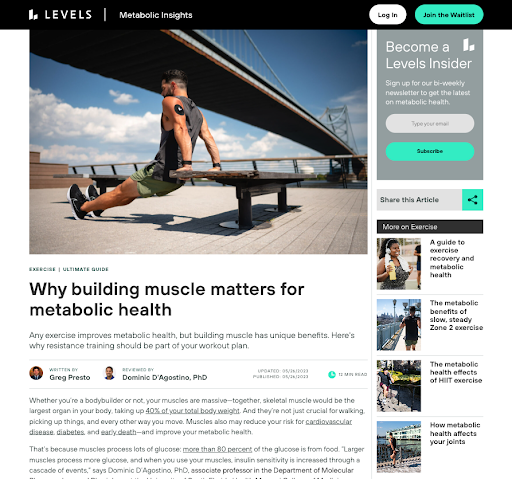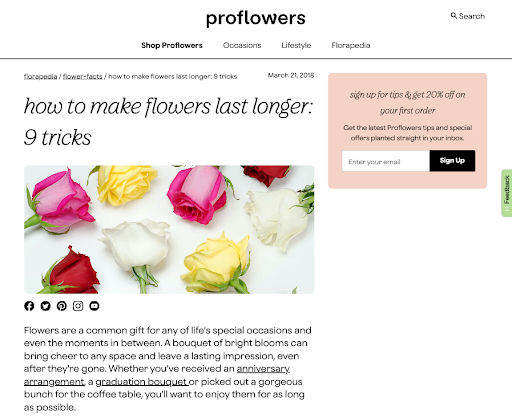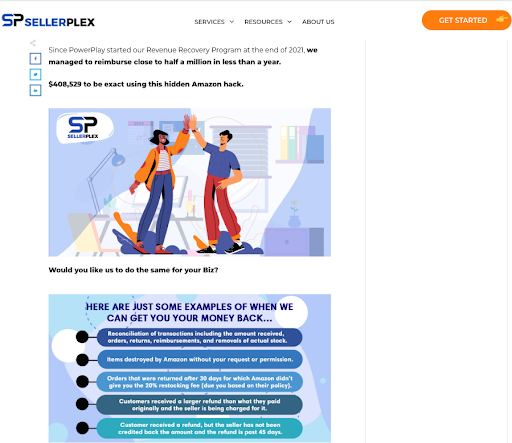Topics:
Never Miss a Beat - Get Updates Direct to Your Inbox
FILTER:


Blogging for Results: How to Raise Your Content Marketing Game by Improving SEO and User Experience
By Quiet Light
Blogging is one of those marketing activities that can help you reach, engage, and convert your target audience all at once. It can also add immense value to your business and exponentially improve its sales prospects. But the truth about producing and distributing blog posts is that it’s not always easy to get it right.
As you embark on your content marketing journey, remember that most organizations use content marketing to promote their brands and products. When blogging, you’ll be up against some pretty hefty competition.
If you’re prepared to start blogging for results, here’s how to improve outcomes by improving both SEO performance and user experience.
Thinking of Selling Your Business?
Get a free, individually-tailored valuation and business-readiness assessment. Sell when you're ready. Not a minute before.
Remember That SEO Is (Still) Your Main Consideration
What does it take for brands to reach their target audiences? Well, for starters, a robust online presence is a must.
Let’s take a quick look at GWI’s latest research on brand discovery. According to the resource, 31 percent of consumers find out about new products via search engines (closely followed by TV ads, word-of-mouth recommendations from friends and family, and social media ads). So if you want your target audience to learn about your solutions, you need to rank on search engine results pages (also known as SERPs).
But not any ranking is good enough when trying to boost your brand’s reach. Data shows that fewer than 1 percent of people click on something on the second page of Google. Even more importantly, the difference in click-through rates between position #1 and position #10 on Google is 10x.
In other words, getting your brand and products to capture your potential customer’s attention requires optimizing your website for high search engine rankings—and blogging is one of the best ways to do it.
By following a few tried-and-tested content optimization best practices, you’ll ensure your blog posts reach their intended audience and have the highest possible potential of converting first-time web visitors into satisfied customers. Overall, there are a few steps you need to follow to optimize content for SEO:
- Conduct topic and keyword research to identify subjects relevant to your target audience.
- Explore related keywords to maximize blog-post ranking potential (and uncover new content opportunities).
- Produce and publish high-quality, valuable content. Make sure you update it regularly so that it remains relevant and accurate.
- Use internal links to encourage readers to explore more of the posts on your company blog.
- Pay attention to technical SEO, primarily your meta tags and Core Web Vitals.
Another thing to note is that investing in SEO isn’t just about reach and authority. Well-optimized content can also be a source of revenue. And, perhaps even more importantly, it can be a powerful value driver when the time comes to sell your business and make a profitable exit.
Provide a Visible Window into Your Services
Most readers interacting with your blog don’t necessarily know what products or services your brand offers. All they know is they have a question, and (hopefully) you have the answer.
Keeping web visitors happy requires you to address their pain points and present them with solutions. However, you shouldn’t pass up the opportunity to utilize your articles as a subtle but effective introduction to your products and services. It’s an excellent method for boosting conversions and revenue, and effective conversion strategies directly contribute to your business’s value.
To see an excellent example of this strategy in practice, check out this post on 6 Productivity Systems You Should Know on Monday.com’s blog.
This SaaS brand has built its reputation by publishing helpful blog posts that answer common consumer questions. But what particularly stands out about Monday’s approach to blogging is that each guide makes room for some subtle (but logical) self-promotion.
Look at how the post conveniently positions the brand’s SaaS product as a productivity system in its own right. This strategy isn’t just a fantastic opportunity to present their solution’s key benefits. The included CTA (call-to-action) buttons further allow the business to boost conversions via content, getting the absolute most out of its content marketing efforts.


Source: monday.com
Or, for an even bolder example of this content marketing tactic in action, look at this guide to Words With Friends on Unscramblex.
Knowing what its audience wants and needs (in this case, a way to improve at word games), this brand created dedicated content pages for each of its product’s applications. It made sure to present first-time web visitors with insights on how to win at word games. And it delivered these insights in a long-form structure that answers all possible user questions.
But Unscramblex also knew that people coming from Google want quick solutions. That’s why it placed its website’s core function at the top of the page. So while first-time web visitors can read through the 1,000+ words about generating words for the game, they can also just use the site’s function and instantly get dozens of possible words based on a string of random letters.
The outcome is a win-win. The user has solved their pain point, and the brand has gained another satisfied customer.


Source: unscramblex.com
Supplement Your Blog with Media Content
According to MIT scientists, “half of the human brain is devoted directly or indirectly to vision.” As a result, one of the best ways to present your audience with information is to do it through visuals.
The power of media in engaging people has become especially pronounced in the last decade. First came photos, infographics, and illustrations. And with the rise of video, brands have unlocked the possibility of supplementing (or transforming) written content with more visually engaging information. This has turned video content from an expensive gimmick into a powerful marketing tool.
It’s not just that media has the aesthetic appeal that will inspire consumers to interact with your blog posts. (Note that research shows that 59 percent of people prefer to consume beautifully designed content.) It can also significantly improve product understanding, making it far easier for you to convince leads to convert.
To raise your content marketing game, then, don’t hesitate to supplement your blog posts with media content.
For instance, if you’re presenting readers with data, one of the best things you can do is prepare infographics. Use them to help prospects visualize figures and comprehend their significance. For a great example, check out this blog post on the Sprout Social website.
Buy a Profitable Online Business
Outsmart the startup game and check out our listings. You can request a summary on any business without any further obligation.
Or, if you want to make your blog content more accessible, make it easier to consume with audio. According to statistical data, 64 percent of podcast listeners tune in from their cars. This is an important statistic for brands trying to reach an audience that may be too busy to read articles.
And finally, if you want to create blog content that will attract and engage your audience but also drive web visitors to become fully immersed in what you say, explore ways to transform blog posts into videos.
A glance at HubSpot shows how effectively this brand maximizes content accessibility with video. It allows readers to choose whether they prefer to read a 2,500-word article or watch an eight-minute video. HubSpot knows both actions will lead to the same beneficial outcome—learning about a topic of interest.
Develop Your Reputation As a Subject Matter Expert
Most people’s go-to sentiment toward (most) organizations is distrust.
According to the latest Edelman Trust Barometer report, most people see the government as a source of misleading information. Similarly, the media is perceived as a divisive force. And consumers are very explicit about the fact that they want to buy from and champion trustworthy businesses that prioritize customer experience over profits.
With this in mind, you need to explore ways to use your content marketing efforts to develop your brand’s reputation as an organization buyers can rely on. It’s the best way to boost sales as well as increase your brand’s value and future sales potential.
The best way to do it? Put a heavy emphasis on your expertise. Research shows that people trust experts and evidence more than anything else (including social proof).
There are several ways to transform a standard blog post into a trust-building powerhouse. Publishing high-quality content is, naturally, the most obvious way to establish your authority. However, there are a couple of additional hacks that could help you employ your content as a way to prove your brand’s credibility.
For example, you could do something similar to what ATH did with their post on metabolic confusion. The brand hires registered and licensed dietitians to write articles about various aspects of nutrition. What stands out about their approach is that each blog post has a clickable author’s name that leads readers to a webpage summarizing the writer’s credentials and includes links to their LinkedIn profile.
Or, if you wish to prove your brand’s dedication to high editorial standards and customer safety, do something similar to Levels. This brand’s content team doesn’t just take care to support every claim in its articles with a scientific reference. It also includes “reviewed by” and “updated” badges at the top of each blog post, ensuring that readers know all the presented data is fact checked, up to date, and a good starting point for making health-related decisions.


Source: levelshealth.com
Prioritize Content Accessibility
We already mentioned that people like reading content that looks pretty. But supplementing with visuals—or formatting to achieve a desired aesthetic effect, for that matter—isn’t just about engagement. It’s also about ensuring that your blog posts make it easy for your audience to soak up the information.
One of the primary rules of blogging for results is that the content needs to be accessible. There are several ways to achieve this effect.
For one, paying attention to readability scores ensures content is written in a way your target audience will comprehend. This will automatically boost product understanding. Plus, it will avoid alienating potential customers with industry jargon or overly complicated language.
Secondly, it’s not a bad idea to explore various ways to communicate information. For instance, when describing a complex process, visuals can be a great way to ensure readers can follow instructions and don’t get lost or frustrated while trying to solve their pain points.
Check out how Going’s post on using Google Flights does this. It includes tons of screenshots and annotations to make the process as easy to learn as possible.
Cater for Visitors in All Stages of the Buyer’s Journey
As you look into the blogging strategies that will yield the greatest value for your business, make sure you have a clear idea of whom you’re writing for. After all, not all your readers will populate the same stages of the buyer’s journey. Presenting readers with information irrelevant to their position in the sales funnel is only likely to drive them away.
That’s why you need to ensure your brand’s blog has something for everyone. In other words, it has to cater to visitors in all stages of the buyer’s journey.
When targeting consumers in the awareness stage, the best type of content to use will be that which teaches prospects about certain concepts. Informational resources like how-to articles and “ultimate guides” will help you target the right keywords. Plus, you can use them to present readers with valuable information that contextualizes their pain points and gently nudges them toward a solution.
For instance, this guide on how to make flowers last longer from ProFlowers shows an expert approach to awareness-stage content marketing. The brand knows its target audience is guaranteed to experience a particular pain point: wilted flower bouquets. So it created an insightful resource for solving that pain point, complete with real-life experiments and photo evidence.
The resulting post is not just a resource that will satisfy its readers. More importantly, it’s an article that successfully establishes the brand’s expertise and commitment to customer satisfaction. Plus, it opens up a subtle opportunity for the business to promote some of its products.


Source: proflowers.com
When targeting the consideration stage of the buyer’s journey, the best thing you can do is support potential customers with information that will help them choose a solution to their needs.
A product overview, like the one below on the Medical Alerts Buyers Guide blog, is a clever solution for doing this. To ensure it gives your prospects what they need, however, you have to guarantee that it:
- Is highly informative
- Presents product recommendations objectively
- Addresses and answers all of your audience’s questions
Moreover, consider supplementing purely sales-oriented content with information that will make the buying experience more enjoyable for your audience. This can include FAQs, product ratings, informative summaries, and even visuals (if possible).
Finally, when producing blog posts meant for buyers in the decision stage of the buyer’s journey, invest in content that will push your prospects toward a conversion.
Create customer stories and case studies. Showcase the granular details of what you deliver and how it will improve your potential clients’ lives. These types of posts are great at achieving conversions; plus, they can be a powerful weapon for boosting brand credibility. That automatically translates into long-term value for your brand (whether you decide to make an exit or not).
Take a quick look at the SellerPlex blog for a great example. The brand utilizes content to introduce potential customers to the specific outcomes it can help them achieve. Their posts are complete with concrete figures and an overview of the methods that will help them produce results.


Source: sellerplex.com
In Closing
As you explore methods of improving your content marketing efforts, remember that there are two main things to keep in mind at all times.
First, you must ensure the content you produce aligns with your audience’s needs. Also, make sure it is written in a way that turns it from a random blog post into an irreplaceable source of information for your future customers.
Second, make sure you maintain a clear idea of what results you need to achieve. This will directly inform your production efforts and help you create content that genuinely benefits your business.
Buy a Profitable Online Business
Outsmart the startup game and check out our listings. You can request a summary on any business without any further obligation.





